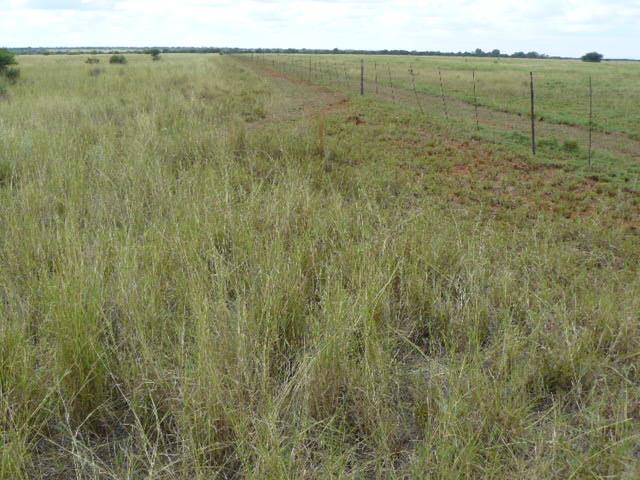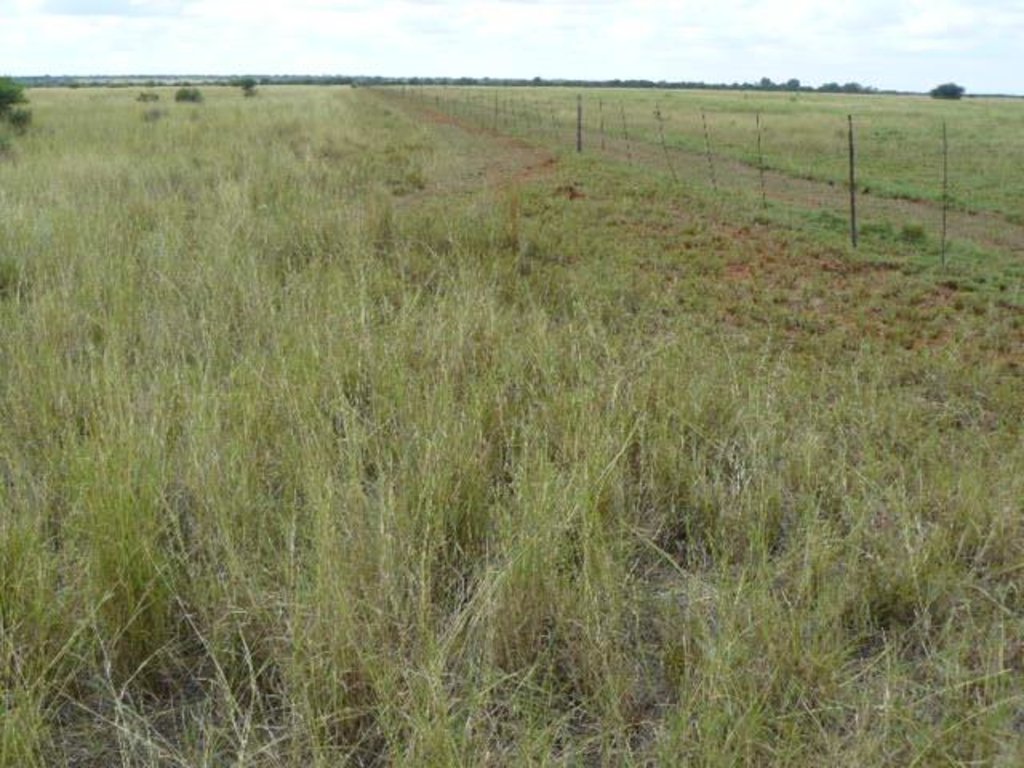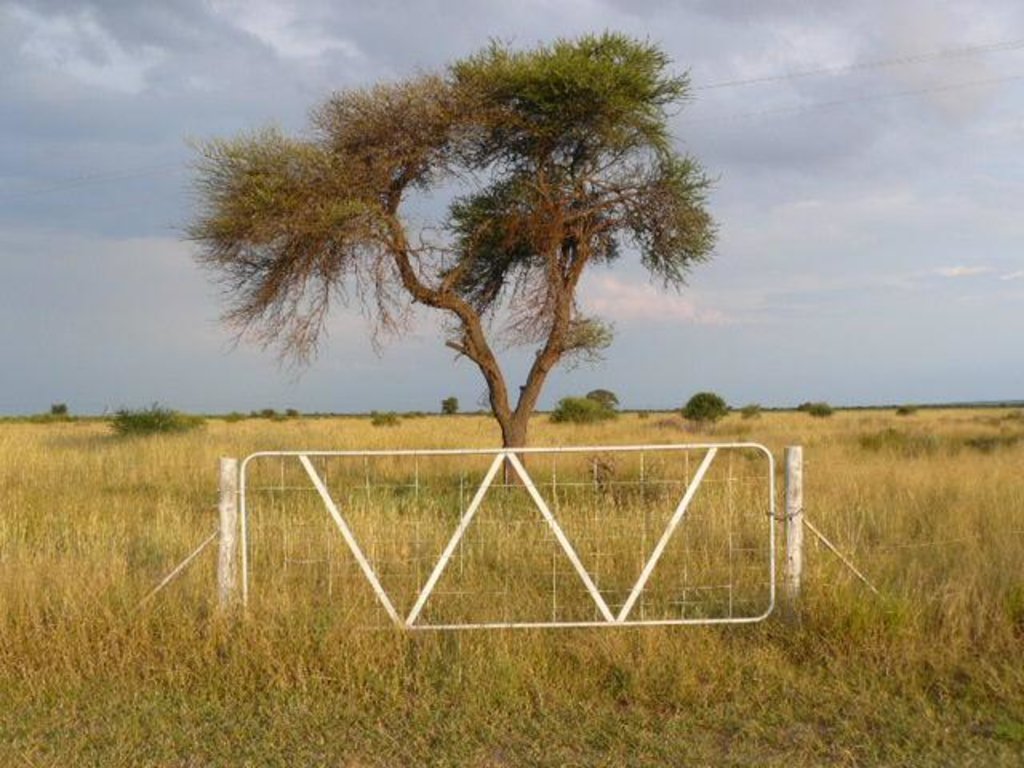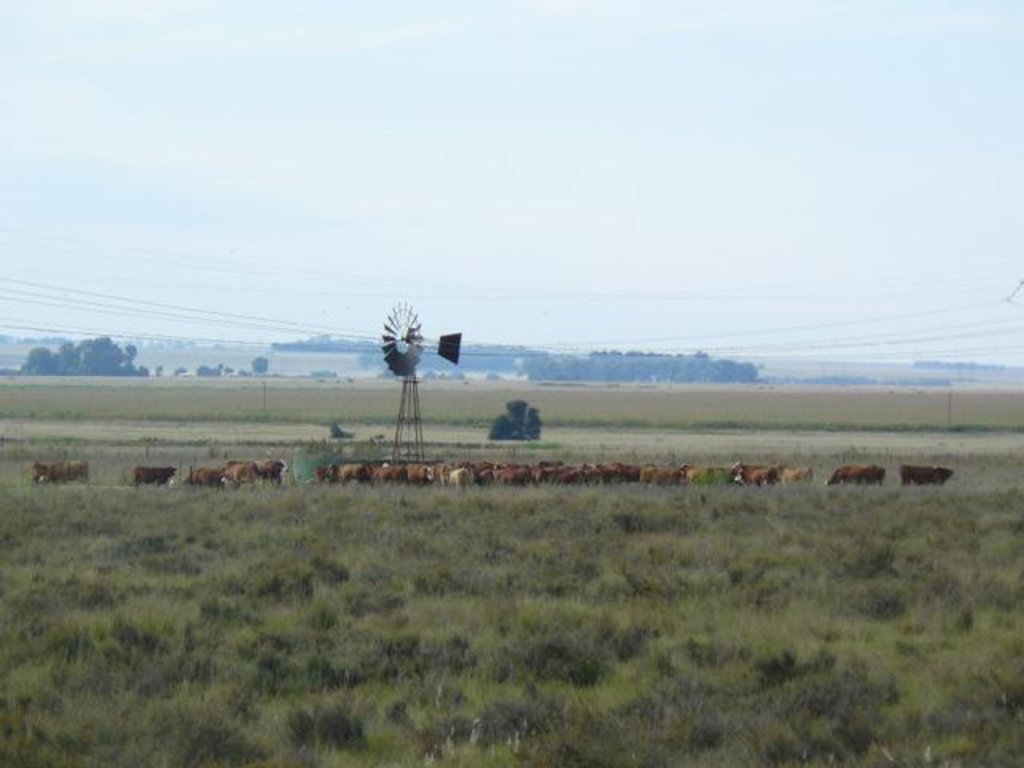Rotational Grazing [南非]
- 创建:
- 更新:
- 编制者: Lehman Lindeque
- 编辑者: –
- 审查者: David Streiff, Alexandra Gavilano
technologies_1356 - 南非
查看章节
全部展开 全部收起1. 一般信息
1.2 参与该技术评估和文件编制的资源人员和机构的联系方式
有助于对技术进行记录/评估的机构名称(如相关)
Ministry of Agriculture, Livestock and Fisheries (MoA) - 肯尼亚1.3 关于使用通过WOCAT记录的数据的条件
编制者和关键资源人员接受有关使用通过WOCAT记录数据的条件。:
是
2. SLM技术的说明
2.1 技术简介
技术定义:
Rotational grazing is a management system based on the subdivision of the grazing area into a number of enclosures and the successive grazing of these paddocks by animals in a rotation so that not all the veld (grazing area) is grazed simultaneously
2.2 技术的详细说明
说明:
Consequently, rotational grazing allows higher stocking rates than continuous grazing. The main principles of rotational grazing are: (1) Control the frequency at which pasture is grazed: adjustment of the rotation cycle ensures a good forage quality in each paddock. Pasture plants (including the most preferred and therefore overused species) are provided with a period of recovery or rest following grazing; (2) Control the intensity at which the pasture plants are grazed by controlling the number of animals which graze each paddock and their period of occupation; (3) Reduce the extent of selective grazing by confining a relatively large number of animals to a small portion of the veld: little opportunity for selection prevents domination of undesirable species. Intensity of grazing should be adapted to the climatic conditions: in drier areas recovery periods should be longer due to limited plant recovery potential and high sensitivity to misuse and degradation. The ratio between periods of occupation and absence determines the plant yield and vigour: the shorter the period of occupation in a paddock the greater will be the yield of the veld: a second ‘bite’ is avoided and consequently the recovery period is at least equal to the period of absence. However, the shorter the period of occupation and the longer the period of absence, the greater is the number of paddocks required in a rotational grazing system. Ideal resting periods vary with growth rate, and with the rate at which the veld loses its quality with maturity. Depending on the season, the climate and the use of irrigation, resting periods vary between 14 and 70 days, and even longer in the semi-arid grasslands (90–150 days). Appropriate stocking rates are assessed through 4 rating factors (defining the veld condition): species composition, basal cover, topography and soil erodibility
2.3 技术照片
2.5 已应用该技术的、本评估所涵盖的国家/地区/地点
国家:
南非
区域/州/省:
Springbokvlakte region, Limpopo Provinc
有关地点的进一步说明:
Crecy area
具体说明该技术的分布:
- 均匀地分布在一个区域
2.7 技术介绍
详细说明该技术是如何引入的:
- 通过项目/外部干预
3. SLM技术的分类
3.1 该技术的主要目的
- 减少、预防、恢复土地退化
3.2 应用该技术的当前土地利用类型

牧场
粗放式放牧:
- 经营牧场
注释:
Major land use problems (land users’ perception): Mainly biological degradation: reduction of vegetation cover, decreasing vegetation diversity
Ranching: Yes
3.5 该技术所属的SLM组
- 畜牧业和牧场管理
3.6 包含该技术的可持续土地管理措施

管理措施
- M2:改变管理/强度级别
3.7 该技术强调的主要土地退化类型

生物性退化
- Bc:植被覆盖的减少
- Bq:数量/生物量减少
- Bs:质量和物种组成/多样性的下降
3.8 防止、减少或恢复土地退化
具体数量名该技术与土地退化有关的目标:
- 防止土地退化
注释:
Secondary goals: mitigation / reduction of land degradation, rehabilitation / reclamation of denuded land
4. 技术规范、实施活动、投入和成本
4.1 该技术的技术图纸
技术规范(与技术图纸相关):
Technical knowledge required for field staff / advisors: high (layout of the camps and design of stock watering and grazing system)
Technical knowledge required for land users: moderate (implementation of the system, building of fences and stock watering system, maintenance)
Main technical functions: improvement of ground cover, improvement of topsoil structure (compaction), increase of biomass (quantity), promotion of vegetation species and varieties (quality, eg palatable fodder)
Change of land use practices / intensity level: change of grazing management
4.3 技术建立活动
| 活动 | 时间(季度) | |
|---|---|---|
| 1. | Farm planning: including technical design of farm plan with grazing paddocks, rotational system and livestock watering system conducted mostly by extension workers or specialists from Dept. of Agriculture | |
| 2. | Fencing | |
| 3. | Establishment of stock watering system including the construction of a dam, windmill, drinking trough, pipeline and borehole | |
| 4. | Establishment of stock watering system including the construction of a dam, windmill, drinking trough, pipeline and borehole |
4.4 技术建立所需要的费用和投入
| 对投入进行具体说明 | 单位 | 数量 | 单位成本 | 每项投入的总成本 | 土地使用者承担的成本% | |
|---|---|---|---|---|---|---|
| 劳动力 | Farm planning, fencing, stock watering | persons/day/ha | 85.0 | 71.52 | 6079.2 | 100.0 |
| 设备 | Equipment | area | 1.0 | 1160.0 | 1160.0 | 100.0 |
| 施工材料 | Construction material | area | 1.0 | 45173.0 | 45173.0 | |
| 技术建立所需总成本 | 52412.2 | |||||
| 技术建立总成本,美元 | 52412.2 | |||||
注释:
Duration of establishment phase: 6 month(s)
4.5 维护/经常性活动
| 活动 | 时间/频率 | |
|---|---|---|
| 1. | Fencing | |
| 2. | Maintenance of windmill, pipeline, dam and drinking trough | |
| 3. | Implementing the system (moving livestock from one paddock to another, attend to livestock watering requirements (opening and closing of valves and attending to windmill brake on windy days) |
4.6 维护/经常性活动所需要的费用和投入(每年)
| 对投入进行具体说明 | 单位 | 数量 | 单位成本 | 每项投入的总成本 | 土地使用者承担的成本% | |
|---|---|---|---|---|---|---|
| 劳动力 | Fencing | persons/day/ha | 32.0 | 99.15 | 3172.8 | 100.0 |
| 施工材料 | Material | area | 1.0 | 10213.0 | 10213.0 | 100.0 |
| 技术维护所需总成本 | 13385.8 | |||||
| 技术维护总成本,美元 | 13385.8 | |||||
注释:
Above mentioned costs are merely and indication for a typical livestock farm of 500 ha.
4.7 影响成本的最重要因素
描述影响成本的最决定性因素:
Estimated establishment time for a 500 ha farm with 8 paddocks more or less 6 month(s). The establishment and maintenance costs depend on farm size and the details of the farm plan/ design of the paddock system including variables such as number of paddocks, number of stock watering points, number of boreholes, etc.
5. 自然和人文环境
5.1 气候
年降雨量
- < 250毫米
- 251-500毫米
- 501-750毫米
- 751-1,000毫米
- 1,001-1,500毫米
- 1,501-2,000毫米
- 2,001-3,000毫米
- 3,001-4,000毫米
- > 4,000毫米
有关降雨的规范/注释:
Also 501-750 mm
农业气候带
- 半湿润
- 半干旱
Thermal climate class: subtropics
5.2 地形
平均坡度:
- 水平(0-2%)
- 缓降(3-5%)
- 平缓(6-10%)
- 滚坡(11-15%)
- 崎岖(16-30%)
- 陡峭(31-60%)
- 非常陡峭(>60%)
地形:
- 高原/平原
- 山脊
- 山坡
- 山地斜坡
- 麓坡
- 谷底
垂直分布带:
- 0-100 m a.s.l.
- 101-500 m a.s.l.
- 501-1,000 m a.s.l.
- 1,001-1,500 m a.s.l.
- 1,501-2,000 m a.s.l.
- 2,001-2,500 m a.s.l.
- 2,501-3,000 m a.s.l.
- 3,001-4,000 m a.s.l.
- > 4,000 m a.s.l.
关于地形的注释和进一步规范:
Slopes on average: Also moderate (6-10%)
5.3 土壤
平均土层深度:
- 非常浅(0-20厘米)
- 浅(21-50厘米)
- 中等深度(51-80厘米)
- 深(81-120厘米)
- 非常深(> 120厘米)
表土有机质:
- 中(1-3%)
如有可能,附上完整的土壤描述或具体说明可用的信息,例如土壤类型、土壤酸碱度、阳离子交换能力、氮、盐度等。:
Soil fertility is high and just soils with high fertility are used for cultivation
Soil drainage / infiltration is medium - good
5.6 应用该技术的土地使用者的特征
生产系统的市场定位:
- 商业/市场
个人或集体:
- 个人/家庭
机械化水平:
- 机械化/电动
说明土地使用者的其他有关特征:
Difference in the involvement of women and men: mainly large-scale commercial livestock farmers (large areas allow for many grazing paddocks)
Population density: 100-200 persons/km2
5.7 应用该技术的土地使用者使用的平均土地面积
- < 0.5 公顷
- 0.5-1 公顷
- 1-2 公顷
- 2-5公顷
- 5-15公顷
- 15-50公顷
- 50-100公顷
- 100-500公顷
- 500-1,000公顷
- 1,000-10,000公顷
- > 10,000公顷
这被认为是小规模、中规模还是大规模的(参照当地实际情况)?:
- 大规模的
5.8 土地所有权、土地使用权和水使用权
土地所有权:
- 社区/村庄
- 个人,未命名
土地使用权:
- 社区(有组织)
- 个人
注释:
Mainly individual not titled or partly communal village ownership
6. 影响和结论性说明
6.1 该技术的现场影响
社会经济效应
生产
饲料生产
注释/具体说明:
In available dry-material
畜牧生产
注释/具体说明:
Due to increased and better fodder
生产故障风险
生产区域
注释/具体说明:
Due to better drinking water availability
水资源可用性和质量
饮用水的可用性
注释/具体说明:
Through improved livestock watering systems
饮用水的质量
注释/具体说明:
Through improved livestock watering systems
收入和成本
农业收入
社会文化影响
食品安全/自给自足
生态影响
水循环/径流
地表径流
蒸发
土壤
土壤水分
土壤覆盖层
生物多样性:植被、动物
生物量/地上C
植物多样性
栖息地多样性
减少气候和灾害风险
干旱影响
6.2 该技术的场外影响已经显现
水资源可用性
地下水/河流污染
6.3 技术对渐变气候以及与气候相关的极端情况/灾害的暴露和敏感性(土地使用者认为的极端情况/灾害)
注释:
The technology is tolerant to climatic changes: land users can adjust grazing and resting periods according to changing conditions
6.4 成本效益分析
技术收益与技术建立成本相比如何(从土地使用者的角度看)?
短期回报:
非常消极
长期回报:
积极
技术收益与技术维护成本/经常性成本相比如何(从土地使用者的角度看)?
短期回报:
轻度消极
长期回报:
积极
注释:
Establishment costs are very high and discourage many farmers from using a multi-paddock grazing system
6.5 技术采用
注释:
There is a moderate trend towards spontaneous adoption of the Technology
Comments on adoption trend: Since 1994 rotational grazing has no longer been subsidised by the government (subsidies are restricted to small-scale communal and subsistence farmers). There is a moderate positive trend in adoption of the technology.
6.7 该技术的优点/长处/机会
| 土地使用者眼中的长处/优势/机会 |
|---|
| Rotational grazing allows higher stocking rates than continuous grazing |
| Adaptation to climate change and droughts |
6.8 技术的弱点/缺点/风险及其克服方法
| 土地使用者认为的弱点/缺点/风险 | 如何克服它们? |
|---|---|
| Cost of construction or initial implementation | convince farmers to see it as a long term investment to ensure sustainable production |
| Veld fires damage fences and drinking troughs | prevent accidental veld fires by making fire bunds at the start of the dry season |
7. 参考和链接
7.2 参考可用出版物
标题、作者、年份、ISBN:
Tainton N.M. 1988. Veld and Pasture Management in South Africa. Shuter & Shooter, Pietermaritzburg in association with University of Natal Press, Pietermaritzburg
标题、作者、年份、ISBN:
Department of Agriculture and Water Supply. 1989. Veld management in the Eastern Cape. Government Printer, Pretoria
链接和模块
全部展开 全部收起链接
无链接
模块
无模块





